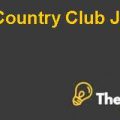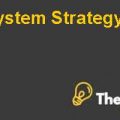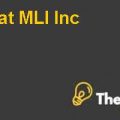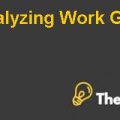The Gap Inc. Case Study Solution
Overview
The Gap Inc. was incorporated in 1969.In its initial stage,the company operated as a retailer of Levi’s jeans, records, and tapes. In 1984,Merchandiser, Mickey Drexler restructured the company. After the restructuring, company provided stylish but affordable apparel for 20 to 45 years old customers. In 1986, the company entered into children market and started to provide goods for boys and girls aged between 2 to 12 years.
Hence we can conclude that the company is a special retailer of active and casual apparel for men, women, and children.
Business Strategy
Business strategy is defined as the long-term plan of actions which is designed to achieve the goals and objectives of the company.
The Gap Inc. introduced itself as the trend-setter in casual wear at a reasonable price for all age groups of customers. The company expanded itself through acquisitions and to obtain high market share of casual men and women apparel,it acquired Banana Republic Inc. a special retailer of men and women apparel.
The Gap Inc. conducts its business through shopping malls and its stores are primarily located in shopping malls throughout the U.S. In 1992, Gap owned 1226 stores from which 1176 are located in U.S while others are located in Canada and the U.K.
Gap Inc. uses its own team consist on Lisa Schultz and John Fumiatti to conduct research about the consumer desire for cloth.After the research this team develops designs for the company and creates new designs in advance approximately one year before the sale however, the stores receive new collections at every two months,so Gap sells old collection quickly at reduced prices.
The company manufactures cloths under the Gap’s private label.Furthermore, to manufacture the clothes the company uses 450 suppliers along with this, the company also uses 200 staff members to inspect the quality and the process of manufacturing.Moreover, the company uses domestic as well as foreign suppliers for the manufacturing.
Along with this.the company also uses its own advertising campaign which is developed by the in-house staff. For the advertising purpose,company uses fashion, lifestyle magazine and other sources such as television. In 1991, company won an advertisement award which indicates that the company has good advertising expertise.
Financial Performance
The financial performance of the company can be analyzed by analyzing the key ratios of the company.To analyze the performance of the Gap Inc. we calculate the following ratios.
Net operating gross profit margin, asset turnover, ROA, ROE, leverage and interest coverage. After calculating these ratios, we compare them with the competitors Limited Inc. and Specialty Retailers’ industry composite. See Exhibit 1
The operating profit margin of a company shows about how successful the company is in converting its sales into profits after accounting for the cost of sales and operating expenses. The operating profit margin (NOPAT) of the company over three years’ average is 7.68%. This shows that the company’s operating profit margin is 7.68% of the sales revenue of the company. Whereas if compared with the competitor, Limited Inc. the NOPAT of the competitor is 12.47%. This shows that the competitor is performing well in comparison with the Gap Inc. However, the NOPAT of the specialty retailer industry is 9.92% which is neither good or bad if compared with the two companies namely Gap Inc. and the Limited Inc.
The gross profit margin shows the percentage of the profit earned by the company after deducting the cost of sales from the sales revenue. The gross profit margin average is 38.48% of the Gap Inc. This shows that the cost of sales is approximately 62% of the sales revenue of the company. On the other hand, the competitor i.e. Limited Inc. has gross profit margin of 35.53% average over three years and this shows that the competitor is less good than the company in converting the sales revenue into gross profit margin as the competitor does not seem to have a good cost control over the direct costs. However, the competitor i.e. Specialty Retailer has the gross profit margin of 36.46% on average and it shows that it is slightly better than the Limited Inc.
The asset turnover shows the utilization of the assets of the company in generating the sales. The asset turnover average is 2.032 and this shows that $1 of the asset is generating $2 of revenue. On the other hand, the average asset turnover of the competitors is 2.113 and 2.16 of the Limited Inc. and Specialty Retailer and this shows that Specialty Retailer is far better than both the companies................
This is just a sample partial case solution. Please place the order on the website to order your own originally done case solution.











